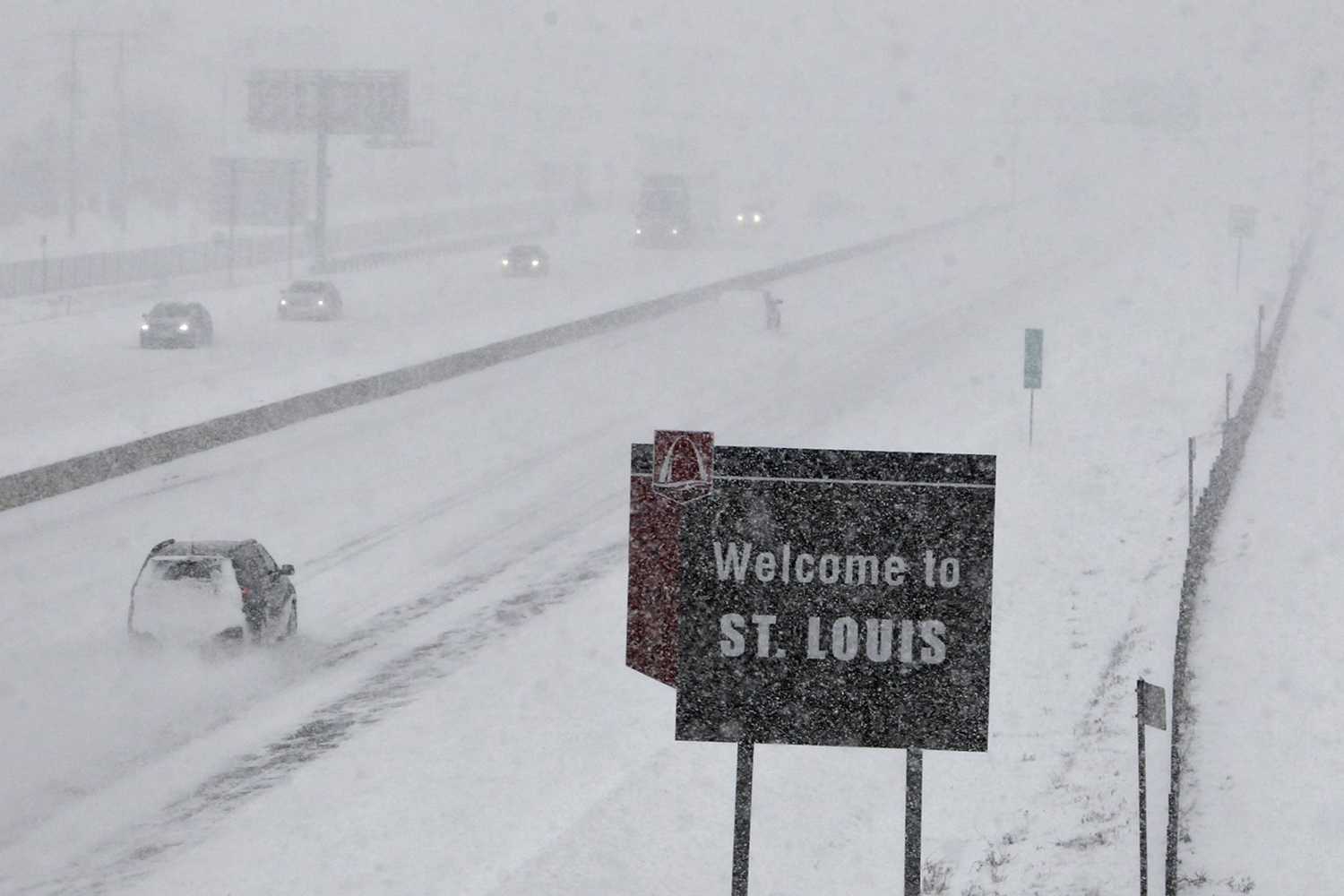Your donation will support the student journalists of Francis Howell Central High School. Your contribution will allow us to purchase equipment and cover our annual website hosting costs. FHCToday.com and our subsequent publications are dedicated to the students by the students. We hope you consider donating to allow us to continue our mission of a connected and well-informed student body.
Predicting mother nature
Long term forecasting helps to reveal what kind of weather people need to prepare for in the future.
May 1, 2014
With eight snow days and counting, FHSD and the the St. Louis community have been faced with several winter storms so far this year. To students, the snow days came as a delightful surprise, yet to some meteorologists and weather prognosticators, the amount of snowfall and blistering cold temperatures were no surprise at all. The World Meteorological Organization defines long range forecasting as predicting the weather for 10 or more days in advance. Most long range forecasting is done by statistics, linking future weather patterns to current conditions, according to their site. Only a few meteorologists do this type of predicting because of the difficulties and complexities that it presents. The Farmers’ Almanac is one such predictor. Predicting the weather almost two years in advance, they claim to use no special radars or computers, just observations on nature such as sunspot activity, moon phases and tidal action. People read their predictions to make special dates in hopes that Mother Nature will cooperate.
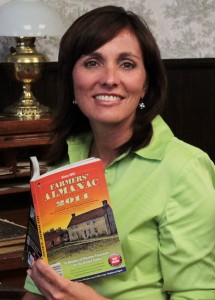
“The point is people want to plan ahead— they want to be prepared for the elements,” Ms. Sandi Duncan, Managing editor of the Farmers’ Almanac said. “Many people plan their firewood and/or oil purchases based on our outlooks, as well as vacations and wedding dates, based on the Farmers’ Almanac predictions. People want to plan; they need to know what we’re predicting. We’ve been doing this for close to 200 years and are one of the only sources to go out on a limb so far in advance.” The man behind all these predictions stays under a pseudonym to help keep the formula a true secret, but Ms. Duncan, assures the public the predictor is a real person, with the special algorithm. “’Caleb Weatherbee’ is our weather prognosticator,” Duncan said. “He is a real person, but that is not his real name. He uses a formula that dates back to the early 1800s when the Farmers’ Almanac was first created. He has been doing our forecasts for 20+ years. Caleb is a real person, with a wealth of weather and Farmers’ Almanac knowledge and know-how.” And his predictions are pretty accurate, too.
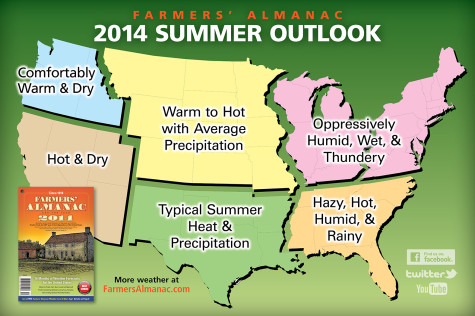
“We are forecasting stormy weather for this [the Super Bowl], the biggest of sporting venues,” Weatherbee said on the website August 2013. “But even if we are off by a day or two with the timing of copious wind, rain and snow, we wish to stress that this particular part of the winter season will be particularly volatile and especially turbulent.”
Their prediction for the Super Bowl proved to be only slightly off. Although the weather was abnormally warm in Rutherford, New Jersey, being 52 degrees two hours before kickoff, that night it did start to rain, which turned into an accumulation of snow as an Arctic blast came in the next day. Predictions like the Super Bowl and the seasonal forecasts are 80-85% accurate, readers of the Farmers’ Almanac claim. According to Ms. Duncan, the inaccuracies can be attributed to a variety of factors.
“Our time-tested weather formula has been used for nearly 200 years,” Ms. Duncan said. “It’s pretty accurate for long-range outlooks. We are sometimes off due to local conditions (we predict the weather for large areas) and sometimes due to late forming things like a strong El Nino. We do our forecasts almost two years in advance and once they are predicted we can’t change them. Mother Nature is also another reason – no one can predict the weather with 100 percent accuracy – not even those people with radar and computers.”
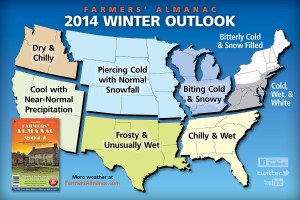
These tools, radars and computers, are used by more traditional meteorologists, like the prognosticators that most people view on the news. One such person located much closer to home is Mr. Dave Murray. Interested in science from a very young age, Mr. Murray witnessed a large thunderstorm and tornado when he was in fourth grade and was instantly hooked with meteorology. Years later, he has 12 Emmy’s under his belt, is Fox 2 news chief meteorologist and helps to share his passion with young children in the St. Louis area by giving them a glimpse of what his field is all about. Mr. Murray, not only does traditional forecasting for the next day, but also seasonal forecasts, predicting the weather conditions of the oncoming season. Unlike Mr. Weatherbee, Mr. Murray’s forecasts are not done as far in advance.
“This is a test of myself and science,” Mr. Murray said “It is not easy and involves a lot of work, year round, but it is also great fun to attempt to do this.”
Similar to the Farmers’ Almanac and Mr. Weatherbee, Mr. Murray uses observations from nature to help predict the weather. He uses a variety of complicated methods, including ocean temperatures around the world, analogs, solar cycles and the frequency and locations of where volcanoes occur. Most of his tactics that Mr. Murray uses are methods that he has learned over time and experience.
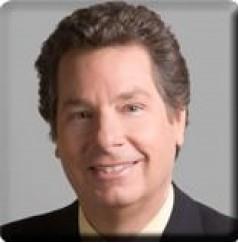
“Really over time I have learned the techniques,” Mr. Murray said. “I have been forecasting the weather for over 35 years, and the long range has been going on for about 10 years. It is all part of the process of time and experience.”
Another distinction between Mr. Murray and the predictions done by the Farmers’ Almanac is that Mr. Murray also makes short range predictions. His work for both is ongoing– every part of each is equally important to illustrating the real picture of what the weather will bring.
“It is an ongoing process each day of the week like putting a puzzle together there are many, many hours for each month,” Mr. Murray said. “You really have to look at everything, because you just don’t want to leave any pieces out. The same goes for a short term forecast too.The processes are about the same. For long range I look more on the global set up in the atmosphere while I look at a little smaller scale in the short range.”
Mr. Murray’s accuracy level is also different compared to the Farmers’ Almanac, with a wider range of error. This winter was particularly successful, with his accurate predictions of the amount of snowfall and cold temperatures that the St. Louis region faced.
“It [My accuracy] is a wide range. I grade each month and the grades have a range of A+ to an F, on the average A’s and B’,” Mr. Murray said. “This winter has been super with the forecast, grades will be out February 20th with the spring forecast. It just depends on the season and events that take place during the time frame of the forecast, certain small scale events can really change the long range ideas.”
For the upcoming spring, Mr. Murray predicts the first half of March to be winter-like and the second half to be more spring like with warmer temperatures. He sees April as having some severe thunderstorms with May bringing more calming weather. To view his complete long-range weather forecast, here is the link: http://fox2now.com/2014/02/20/dave-murrays-long-range-spring-2014-forecast/
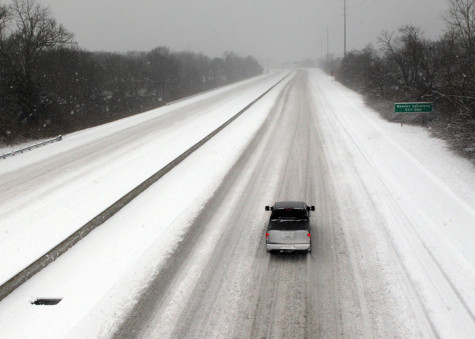
Severe winter weather brings snow days, with FHSD already having eight of them. The process for making snow days lays on the district administration, and students, parents, and teachers alike all look at one person in particular when snow days are being called off– Superintendent Dr. Pam Sloan. The truth is there are many people involved in calling off school, not just her. She works alongside with the director of facilities, Mr.Rick Pavia, director of purchased services, Mr. Mike Sloan and representatives from First Student. Together, they make the decisions. There is communication between the other school districts as well. However, each must access their own situations and make their own decisions.
“We do talk and communicate with one another on what they are doing, but in the end, we have to make our own decision on whether or not we are going to have school because just Francis Howell alone, we are 150 square miles and we are a large area,” Dr. Sloan said. “There are times when one district will have school and the other will not. Orchard Farms is also in our county, but they have a different kind of flatter land and much more rural so many times they don’t have school, but we do. St. Charles School District is more of a city school district and they don’t have as much rural area to travel so they often have school when we don’t. Zumwalt and us are really similar.”
There are many factors to calling off school. According to the Department of Education in Missouri, school may be called off on the terms of inclement weather, which “is defined as as ice, snow, extreme cold, flooding, or a tornado, but such term shall not include excessive heat.” FHSD is most accustomed to no school due to snow days.
“ We look at when the snow is projected to fall, how much snow is on the ground,” Dr. Sloan said. “Because of technology, we are able to get a much more accurate look on what the weather is going to look like. We check in to weather stations, consider student drivers and how much of the district is safe, because that is our greatest overall consideration.”
Another reason FHSD has recently been called off school is due to cold conditions and winter chill advisories. However, even with a temperature reading, there is no precise number that determines if FHSD’s schools will be in session or not.
“There is no magic number. We look at wind chill advisories/warnings,” Dr. Sloan said. “If the temperatures get into -15 to -20 degrees, we seriously consider the safety of the district. We take into consideration how long the cold will be here, because this could affect most specifically, students waiting for the bus. We also make sure buses are working; some districts have had problems with this this year. We have people that go in at midnight to make sure the buses start and and are good to go in the morning.”
Calling off school is not the only option though. There is early release and also one hour delay, something that has not been used for as long as Dr. Sloan can remember. “I have never used it, and I do not recall other superintendents before me using it,” Dr. Sloan said. “I have never used it because when making the call it is very different to tell if one hour is going to make a difference in the weather conditions.”
Some may wonder if having so many snow days affect the chances that FHSD will have another one in the future, but Dr. Sloan assures that there is no difference in the likelihoods.
“Each day is an independent day and the fact that we have had this many, doesn’t make me think ‘Oh, we shouldn’t call off school again,’ ” Dr. Sloan said. “Each day has independent circumstances, and I use all the same considerations that I would have.”
There have been stories of the great costs that the snow affects the area, but according to Dr. Sloan, snow days do not have drastic financial implications.
“We will make up the days so as far as daily attendance there is no difference, but we are working our custodial and maintenance guys overtime, after their initial hours during that time so some of them would work into overtime,” Dr. Sloan said. “Supplies and all of that stuff to go along with it, like salt and tools, are other costs. But since we are making up the snow days, there are no drastic financial implications.”

